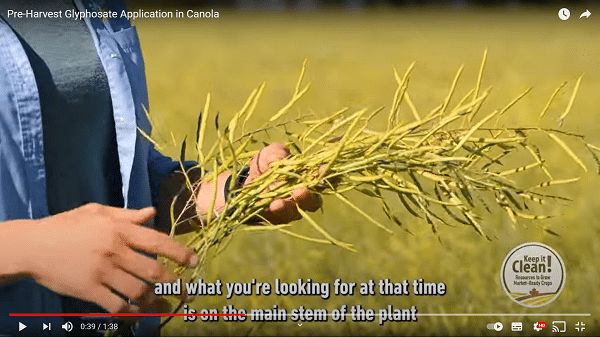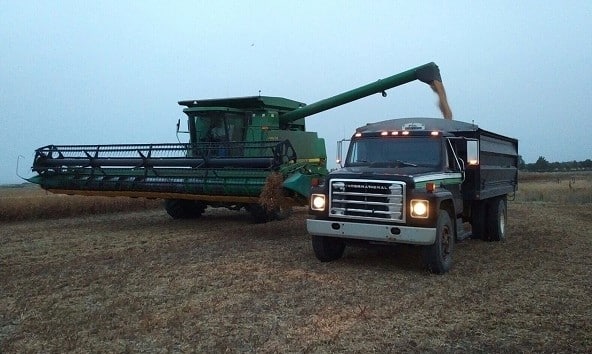
Managing pre-harvest glyphosate application
Keep it Clean is reminding Canadian canola growers that pre-harvest glyphosate applications should be carefully managed to help ensure crops meet the needs of domestic and export customers. Applying pre-harvest glyphosate for weed control too early can result in unacceptable product residues in harvested grain, which can create market risk. Where allowed, pre-harvest glyphosate should only be applied for weed control once grain moisture is less than 30 per cent in the least mature part of the field. Keep It Clean offers several resources to help producers identify when to pre-harvest spray based on pre-harvest intervals (PHIs). Consult the Keep it Clean Pre-Harvest Glyphosate Staging Guide to see examples of various crops at less than 30 per cent grain moisture. The Spray to Swath Interval Calculator can help producers determine the PHIs of various pesticides on canola. An upcoming webinar will provide tips and tools on proper staging for pre-harvest glyphosate application, PHIs and scouting for disease. For more information and to register, click here.
Lygus bugs and diamondback moths — tools for your toolkit
Diamondback moths are exceeding thresholds in some Manitoba fields while lygus bugs continue to increase in number across the Prairies. This updated article has tips on lygus scouting and thresholds, including threshold considerations for very dry conditions. For diamondback moths, try not to make hasty decisions when scouting. Thresholds are not based on sweep nets; sheer numbers in a sweep net tend to make them look like a threat well before their spray threshold is reached. Assess diamondback moth threshold by counting larvae per square foot or square metre. Threshold and scouting tips for diamondback moths are available here and more information on factors impacting diamondback moth populations can be found here Before making any application this late in the season, check the Spray to Swath Interval Calculator to see the pre-harvest interval of the pesticide you’re using. Proper timing preserves the marketability of our crops.

Straight-cut or swath? Now’s the time to think about it
This is the time of year producers will want to start finalizing plans for swathing or straight-cutting their canola at harvest time. Not all straight-cut cultivars get straight cut and the same goes for shatter-susceptible. Be deliberate in making the swath/straight-cut decision by evaluating variability, height and stand thickness on a field-by-field basis. For tips on deciding between these two methods, click here. For helpful considerations and reference images regarding swath timing and straight cutting canola, see the CCC Guide to Managing Canola Harvest.
Canola as feed – economics and tips
Cattle will eat canola plants and canola can provide an adequate feed source. Feed value tends to be higher when canola is cut at full bloom to early pod stage when plants are still green and leafy. The decision to cut canola for feed should compare all costs and opportunities for seed versus feed. This article provides details to help with that decision.
